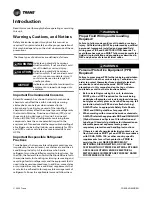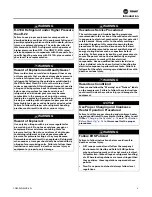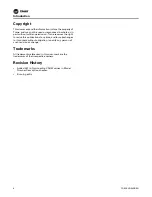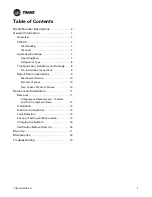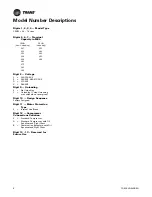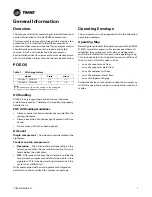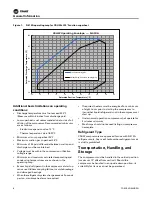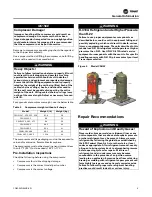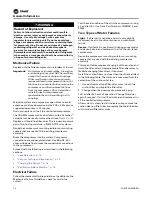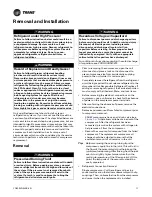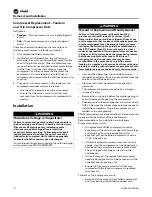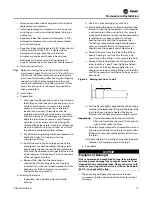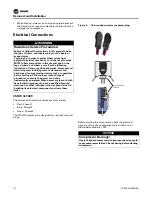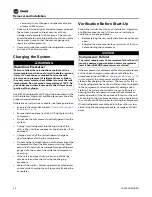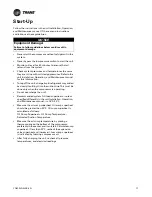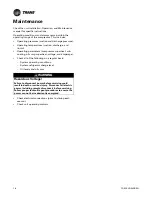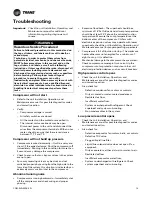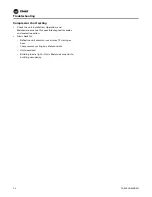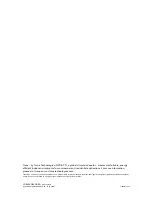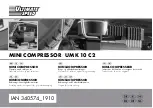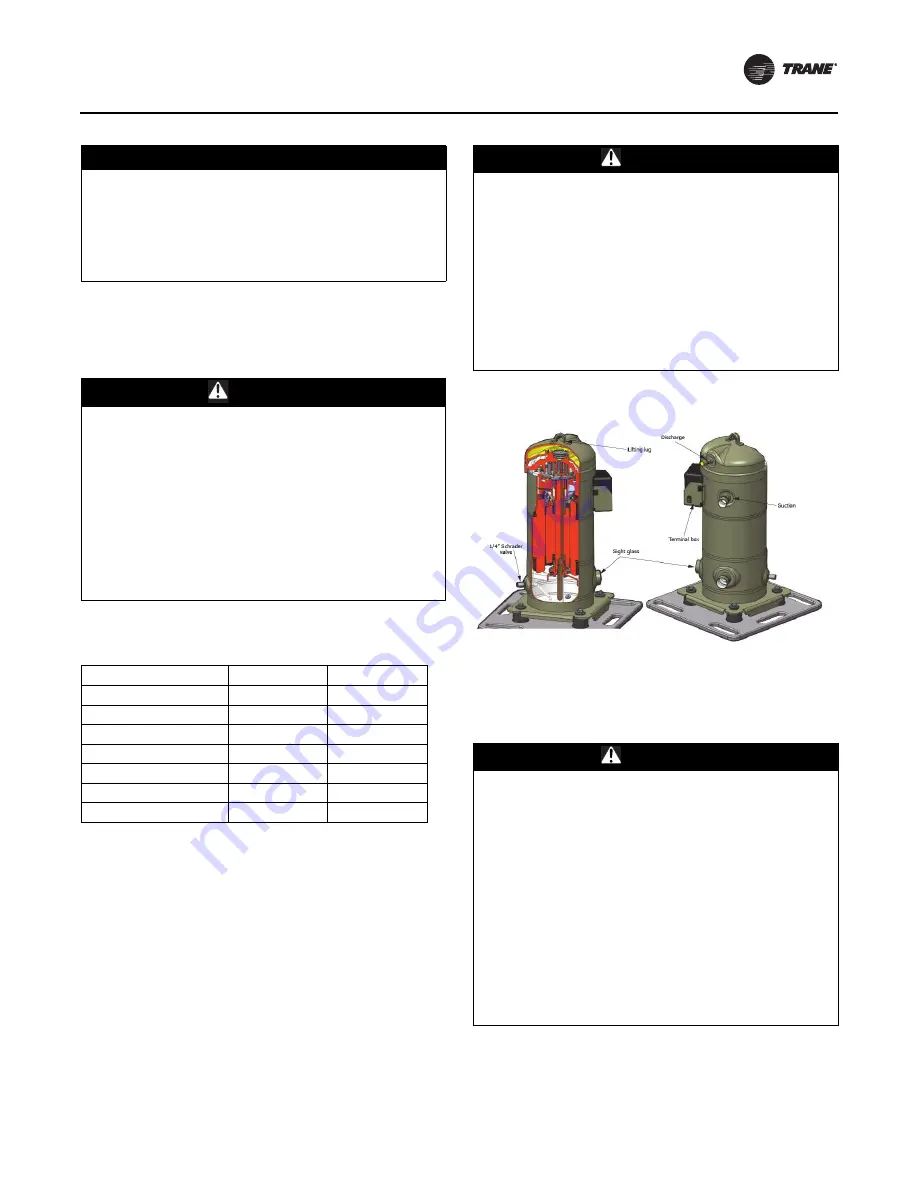
General Information
COM-SVN003B-EN
9
Damage to compressor or packaging should be reported
to the shipper immediately.
Use a proper method of lifting the compressor, both lifting
ears must be used with a spreader bar.
For approximate compressor weight, see the below table.
The compressor and its packaging must not be exposed to
rain and/or corrosive, flammable atmosphere.
The compressor must not be stored in an environment less
than -31°F (-35°C) or to 160°F (+71°C).
Pre-Installation Inspections
Check the following before using the compressor:
•
Compressor for visible shipping damage.
•
Compressor is the correct model/part number.
•
Compressor is the correct voltage.
Repair Recommendations
NOTICE
Compressor Damage!
Improper handling of the compressor could result on
compressor damage. A compressor that has been
tipped, dropped or transported in a non-upright position
could contain internal damage and it is recommended
that the compressor not be put into service.
WARNING
Heavy Objects!
Failure to follow instructions below or properly lift unit
could result in unit dropping and possibly crushing
operator/technician which could result in death or
serious injury, and equipment or property-only damage.
Ensure that all the lifting equipment used is properly
rated for the weight of the unit being lifted. Each of the
cables (chains or slings), hooks, and shackles used to
lift the unit must be capable of supporting the entire
weight of the unit. Lifting cables (chains or slings) may
not be of the same length. Adjust as necessary for even
unit lift.
Table 2.
Compressor weight without oil charge
Model
Weight (lb)
Weight (kg)
CSHW 047, 050, 052, 056
83.8
38
CSHW 052-2
86
39
CSHW 058, 060, 073
86
39
CSHW 060-2
88.2
40
CSHW 065-2
90.4
41
CSHW 082, 089
99.2
45
CSHW 082-2, 089-2
101.4
46
WARNING
R-410A Refrigerant under Higher Pressure
than R-22
Failure to use proper equipment or components as
described below, could result in equipment failing and
possibly exploding, which could result in death, serious
injury, or equipment damage. The units described in this
manual use R-410A refrigerant which operates at higher
pressures than R-22. Use ONLY R-410A rated service
equipment or components with these units. For specific
handling concerns with R-410A, please contact your local
Trane representative.
Figure 2.
Model CSHW
WARNING
Hazard of Explosion and Deadly Gases!
Never solder, braze or weld on refrigerant lines or any
unit components that are above atmospheric pressure
or where refrigerant may be present. Always remove
refrigerant by following the guidelines established by
the EPA Federal Clean Air Act or other state or local
codes as appropriate. After refrigerant removal, use dry
nitrogen to bring system back to atmospheric pressure
before opening system for repairs. Mixtures of
refrigerants and air under pressure may become
combustible in the presence of an ignition source
leading to an explosion. Excessive heat from soldering,
brazing or welding with refrigerant vapors present can
form highly toxic gases and extremely corrosive acids.
Failure to follow all proper safe refrigerant handling
practices could result in death or serious injury.


